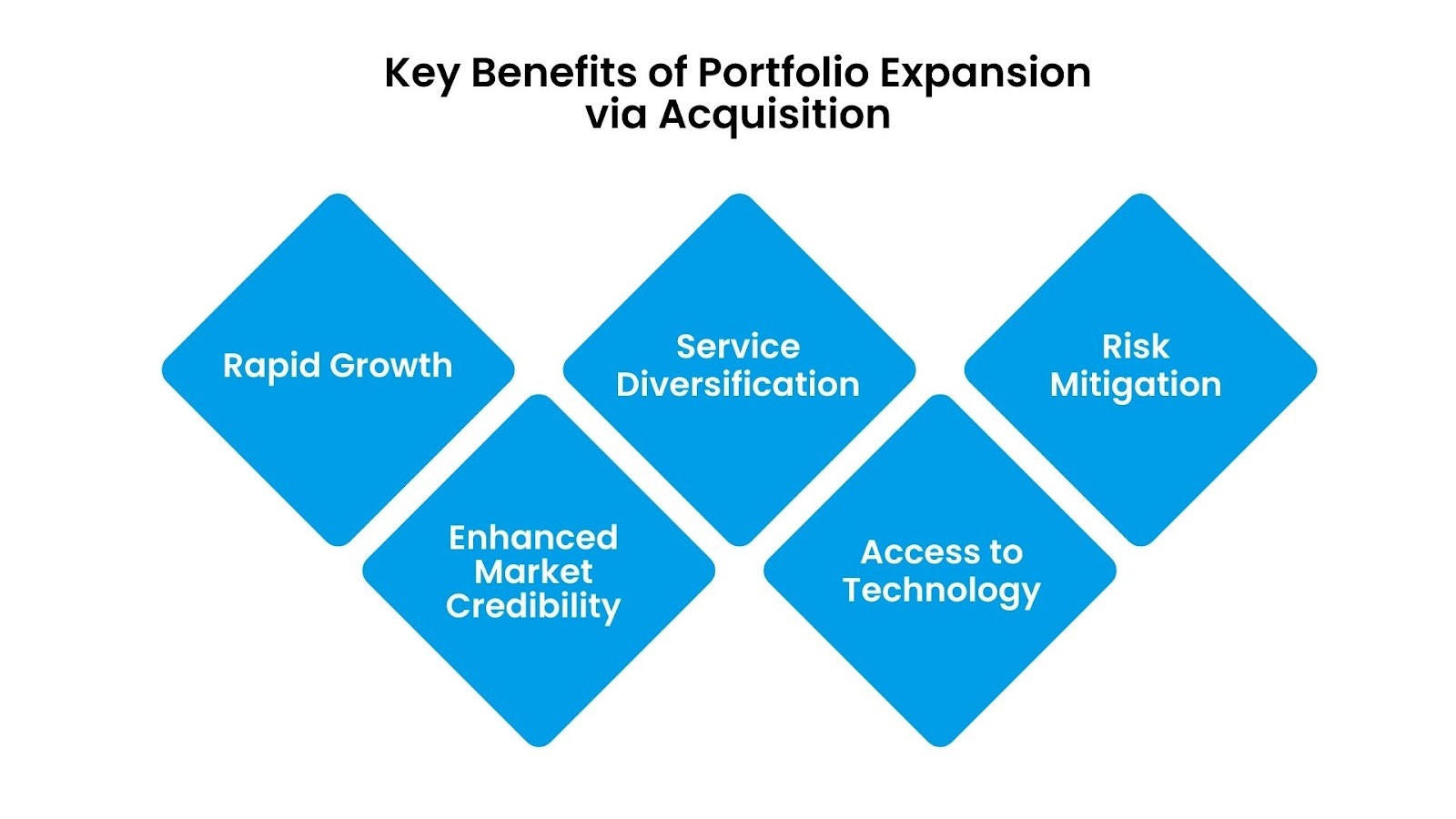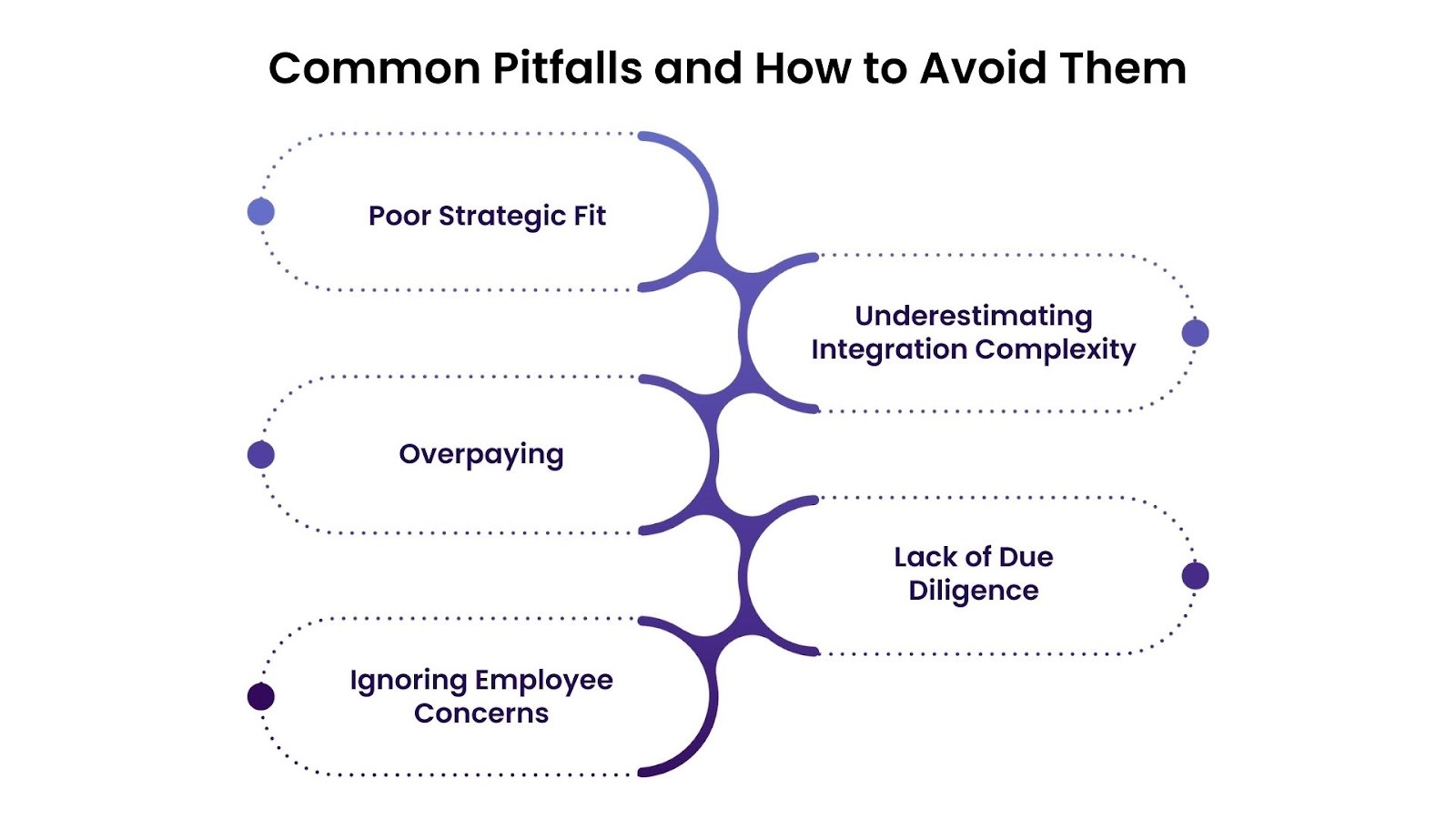Portfolio Expansion Strategies Through Acquisition
Portfolio Expansion Strategies Through Acquisition

Transform Your Financial Future
Contact UsGrowing your portfolio through acquisitions offers a faster way to expand by purchasing existing assets and entering new markets. Instead of building slowly, acquisitions provide immediate access to customers and products.
This strategy helps diversify your portfolio and spread financial risk, making your business stronger. Success depends on choosing the right targets, carefully assessing their value, and managing risks through thorough evaluation.
Smooth integration of acquisitions improves efficiency and boosts credibility in the market. For those managing debt portfolios, acquisitions offer an opportunity to regain control and turn challenges into growth.
This guide will show you how to develop and execute an acquisition strategy that supports your financial and business goals confidently.
Key Takeaways
- Acquisitions help you grow your portfolio faster by buying existing assets and entering new markets quickly.
- Buying portfolios diversifies your business, spreading risk and creating more stable financial health.
- Smart acquisition strategies focus on clear goals, thorough evaluation, and careful risk management.
- Successfully integrating acquired portfolios improves efficiency and helps capture cost savings and revenue growth.
- Using flexible financing and deal structures makes acquisitions manageable and supports sustainable expansion.
The Strategic Role of Acquisitions
Acquisitions offer a powerful way to accelerate portfolio growth. Instead of slowly building market presence, you’re buying into an established customer base, infrastructure, and operational framework.
This is especially relevant in sectors like financial services, where portfolios of loans or accounts can be transferred to specialized firms to maximize recovery and growth potential.
You might be feeling overwhelmed by the complexities of debt and portfolio management, but acquisition strategies can offer a fresh path forward.
By purchasing portfolios from other organizations, such as unsecured debt accounts or overdue loans, you gain immediate access to assets you can manage and grow. This rapid growth helps you achieve scale and competitive positioning more quickly than organic methods.
Beyond speed, acquisitions also allow portfolio expansion into new markets or territories where your presence was previously limited. This geographic diversification reduces reliance on any single market and spreads business risk.
Here’s why acquisitions matter strategically:
- Accelerate entry into new customer segments and services.
- Leverage existing operations for faster revenue generation.
- Build a diversified portfolio to protect against market volatility.
- Gain access to specialized expertise or intellectual property.
For those managing financial portfolios with the constant stress of delinquent accounts, acquisition strategies bring renewed opportunity, turning difficult debts into valuable assets under your control.
Also Read: Portfolio Management Steps and First Step Explained
Key Benefits of Portfolio Expansion via Acquisition

Expanding your portfolio through acquisition comes with distinct advantages over relying solely on organic growth. These benefits can align directly with your need to regain financial control and reduce stress.
1. Faster Growth with Immediate Impact
Acquisitions provide instant access to a ready-made portfolio and client base. Instead of years of incremental progress, you capture immediate value. This speed is essential if you’re under pressure to improve cash flow or enhance market presence.
2. Greater Market Credibility and Presence
Buying into an established portfolio means inheriting its reputation and client relationships. This boosts your credibility and allows quicker market acceptance, especially important in financial and debt management sectors.
3. Product and Service Diversification
Acquiring portfolios with different asset types or services reduces dependency on one revenue source. When various financial products or regional markets combine, your business becomes more resilient.
4. Access to Intellectual Property and Technology
Some acquisitions include valuable proprietary systems, collection technologies, or analytics platforms. These assets can significantly improve portfolio management efficiency and recovery rates.
5. Risk Mitigation
By selecting the right acquisition targets, you can balance underperforming assets with strong performers to create a healthier overall portfolio.
These benefits don’t just apply to growing businesses. If you’re managing existing debt portfolios that feel overwhelming, acquisition strategies can reshape your approach, offering new resources and solutions tailored to your needs.
Also Read: Financial Management Services That Strengthen Your Debt Collection Strategy
Developing a Robust Acquisition Strategy

Before diving into acquisitions, it’s crucial to have a clear, personalized strategy. This ensures your efforts align with your long-term goals and avoid potential pitfalls.
1. Define Your Acquisition Priorities
Identify what types of portfolios or businesses fit your growth vision. This might include geographic targets, types of receivables (credit card debt, medical bills, etc.), or sectors such as financial services or utilities. Your priorities should reflect where you can add value and sustainably manage risk.
2. Set Clear Criteria for Targets
Create a checklist for evaluating potential acquisitions—consider financial health, portfolio quality, operational compatibility, and cultural fit. This objective approach helps filter opportunities to those best suited for your portfolio goals.
3. Align with Strategic Business Goals
Acquisitions should directly support your broader business objectives, whether that’s increasing market share, diversifying products, or improving cash flow. Every acquisition targets measurable outcomes to justify the investment.
4. Plan Your Deal Structure and Financing
Consider financing options such as cash purchases, debt financing, or equity partnerships. The right financing reduces your risk and fits your business capabilities.
5. Establish a Due Diligence Plan
Decide the scope of the investigation before committing. This means thoroughly analyzing financial records, legal compliance, operational capacity, and potential liabilities.
When developing your strategy, remember:
- Focus on actionable goals, not just growth for growth’s sake.
- Tailor criteria that match your specific portfolio and capacity.
- Prepare for investment and resource allocation to support integration.
A well-developed strategy provides you with confidence and clarity, reducing anxiety around acquisitions and helping you make decisions that feel right for your circumstances.
Also Read: How to Automate Complex Collection Processes Step-by-Step
Identifying and Evaluating Acquisition Targets
Finding the right acquisition targets is one of the most critical steps in portfolio expansion. With the wrong choice, you risk financial strain and operational headaches.
Creating a Pipeline of Potential Targets
Start with research in markets and sectors you want to expand. Use industry networks, financial databases, and brokers to identify companies or portfolios up for sale. Build a list of viable candidates for closer evaluation.
Criteria for Evaluation
- Financial Performance: Analyze portfolio age, delinquency rates, recovery history, and profitability.
- Market Fit: Is the portfolio aligned with your geographic or sector goals?
- Operational Compatibility: Consider technology, processes, and staff that you might inherit.
- Legal and Compliance Status: Ensure no major legal risks or compliance violations.
- Cultural Compatibility: For businesses, cultural fit impacts post-acquisition integration success.
Practical Evaluation Tools
- Financial models projecting cash flow and ROI.
- Risk assessment frameworks to highlight potential red flags.
- Site visits or management meetings to gather insights.
Succinctly, you want to:
- Build a qualified list of prospects.
- Use objective criteria consistently.
- Make informed decisions based on data and expert advice.
This approach helps balance opportunity with caution, critical for those managing sensitive or distressed portfolios worried about overcommitting.
Also Read: Integrating Compliance Management Systems with Debt Collection Platforms
Due Diligence & Risk Management
Due diligence is your most important safeguard in an acquisition. It involves thoroughly investigating every aspect of the target to uncover risks before finalizing the deal.
What Due Diligence Covers
- Financial Audit: Validate earnings, debts, and liabilities.
- Legal Review: Confirm ownership rights, contracts, and potential litigation.
- Operational Assessment: Examine technology systems, staff expertise, and processes.
- Compliance Check: Ensure adherence to industry regulations, especially for portfolios with consumer data.
- Risk Identification: Spotlight potential reputational and financial risks.
Beyond traditional checks, you should also:
- Assess integration complexity and hidden costs.
- Examine the target’s customer base and payment behaviors, especially in debt portfolios.
- Consult experts in legal, financial, and compliance fields for a comprehensive review.
Effective due diligence means you won't just find problems—you’ll understand their potential impact and plan how to address them.
Risk Management Tips
- Develop contingency plans for identified risks.
- Negotiate terms to protect yourself from unexpected liabilities.
- Keep communication transparent with stakeholders throughout.
When managing stressed financial portfolios, rigorous due diligence provides reassurance and protects your investment, so you can move confidently from acquisition to growth.
Also Read: Calculating and Managing Days in Accounts Receivable
Structuring and Financing the Acquisition
How you finance and structure your acquisition can significantly influence its success. Thoughtful planning here reduces financial stress and helps align acquisitions with your goals.
Financing Options
- Cash Purchases: Quick ownership transfer without debt, but requires liquidity.
- Debt Financing: Loans or credit lines to fund the acquisition, helpful, but add repayment obligations.
- Equity Partnerships: Selling ownership stakes to investors for capital infusion.
- Convertible Securities: Hybrid instruments with debt and equity features offering flexibility.
Each option has pros and cons, depending on your business size, cash flow, and risk tolerance.
Deal Structure Elements
- Purchase Price: Negotiated based on valuation and due diligence findings.
- Contingent Payments: Earn-outs or performance-based payouts to share risk.
- Warranties and Indemnities: Legal protections against undisclosed liabilities.
- Retention Clauses: Agreements to keep key staff post-acquisition.
Smart Tips
- Work with financial advisors to find the best debt or equity balance.
- Ensure terms reflect realistic risk and return expectations.
- Keep financing manageable to avoid overstretching resources, especially if already managing challenging portfolios.
Proper structuring turns an acquisition from a gamble into a calculated investment that supports steady portfolio growth.
Also Read: Consumer Impact Recovery and Debt Collection Guide
Post-Acquisition Integration Framework
After the deal is signed, your focus shifts to integration, melding two entities into one to capture full value from your acquisition.
Integration Milestones
- Align strategic objectives between acquired and existing portfolios.
- Merge technology platforms and operational processes.
- Communicate clearly with clients and staff about changes.
- Retain key employees to maintain business continuity.
- Resolve cultural differences that could disrupt workflows.
Key Priorities
- Data security and regulatory compliance during systems integration.
- Maintaining client relationships to avoid churn.
- Streamlining operations to realize cost savings.
Integration isn’t just about systems; it’s about people, culture, and relationships. Taking the time to plan and execute each step carefully increases your chances of success.
For debt portfolio managers feeling anxious about managing multiple accounts and teams, a strong integration plan provides structure, reduces surprises, and builds confidence in new growth.
Synergy Capture and Efficiency Realization
Successful acquisitions create synergies, combined value greater than the separate parts. Capturing these benefits is critical to long-term success.
Types of Synergies
- Cost Synergies: Reducing overhead by eliminating duplicate roles or streamlining operations.
- Revenue Synergies: Cross-selling opportunities and expanded market reach.
- Operational Synergies: Sharing best practices and technologies for improved efficiency.
Measuring Synergies
- Define Key Performance Indicators (KPIs) tailored to portfolio goals, like recovery rates and operational costs.
- Regularly track progress to adjust strategies and overcome integration hurdles.
Benefits for Financial Portfolio Managers
- Lower operating expenses through centralized management.
- More predictable cash flows with diversified accounts.
- Enhanced negotiation power with vendors and partners.
Realizing synergies requires focus and dedication but provides a pathway to lasting financial stability and portfolio strength.
Also Read: When Does the Collection Process Begin for Overdue Balances
Common Pitfalls and How to Avoid Them

Acquisitions can drive growth but also carry risks. Understanding common pitfalls helps you avoid costly mistakes.
- Poor Strategic Fit: Acquiring businesses not aligned with your portfolio or growth goals.
- Underestimating Integration Complexity: Overlooking cultural or operational differences that disrupt workflows.
- Overpaying: Letting enthusiasm drive price beyond actual value.
- Lack of Due Diligence: Missing hidden liabilities or operational risks.
- Ignoring Employee Concerns: Losing key talent due to mismanagement or unclear communication.
Avoidance Tips
- Stick to your acquisition criteria and strategy.
- Invest in thorough due diligence and post-acquisition planning.
- Maintain open communication with all stakeholders.
- Be realistic about integration timelines and costs.
By anticipating challenges, you reduce worry and build a stronger foundation for portfolio growth.
Also Read: Navigating the Complexities of Debt Collection Compliance: A Technological Approach
Conclusion
Acquisitions offer a clear path to expanding your portfolio faster and more strategically than organic growth alone.
By developing a focused acquisition strategy aligned with your goals, diligently evaluating targets, and planning integration carefully, you can turn financial challenges into growth opportunities.
Remember, success lies in balancing growth potential with risk management. Taking thoughtful steps lets you expand confidently without added stress.
Expanding your portfolio with The Forest Hill Management means partnering with experts dedicated to your financial success. Their services include:
- Portfolio Management: Personalized plans to effectively manage your financial portfolios, especially outstanding debts.
- Portfolio Acquisitions: Helping businesses burdened with delinquent accounts through fair debt settlement opportunities.
- Compliance & Technology: Strict adherence to industry standards paired with advanced technology to protect your data securely.
With The Forest Hill Management, you receive comprehensive support tailored to your unique financial needs.
Take control of your financial future today.
Contact our financial advisors to create a custom acquisition plan tailored to your unique needs.
FAQs
1. What is a portfolio expansion strategy through acquisition?
It means growing your business or financial holdings by purchasing existing portfolios or companies, rather than building from scratch. This approach offers faster growth and immediate asset access.
2. How does acquisition help manage debt portfolios?
Acquisitions give you control over new debt accounts or loans, allowing you to manage repayments and recoveries efficiently. This can ease financial stress and improve cash flow.
3. What should I consider when choosing an acquisition target?
Focus on financial health, portfolio quality, compatibility with your business, and legal issues. Due diligence helps spot risks before committing.
4. Is acquisition financing risky?
Like any investment, it carries risk, but careful planning, risk assessment, and choosing the right deal structure can minimize uncertainties.
5. How long does post-acquisition integration take?
Integration varies but generally takes months to align systems, staff, and culture. A careful plan helps smooth this process.
6. Can small businesses use acquisition strategies?
Yes. Acquisitions aren’t just for large firms; small businesses can grow through targeted portfolio purchases.
7. What common mistakes should I avoid in acquisitions?
Avoid poor target fit, underestimating integration complexity, and skipping due diligence. Clear planning and expert advice help prevent errors.
8. How can I ensure acquisition benefits outweigh risks?
Set clear goals, conduct thorough analysis, plan integration, and monitor synergies to balance growth with risk management.
-p-500%20(1).png)